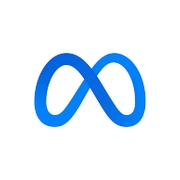- Level Foundation
- Duration 27 hours
- Course by Meta
-
Offered by

About
In this course, you will be introduced to databases and explore the modern ways in which they are used. Learn to distinguish between different types of database management systems then practice basic creation and data selection with the use of Structured Query Language (SQL) commands. By the end of this course, you'll be able to: - Demonstrate a working knowledge of the concepts and principles that underpin how databases work - Identify and explain the different types of core technology and management systems used in databases - Identify and interpret basic SQL statements and commands - Manipulate records in a database with the use of SQL statements and commands - Outline alternatives to SQL - and plan and design a simple relational database system You'll also gain experience with the following: - Fundamental concepts in database - Basic MySQL syntax and commands - Database management systems - MySQL software - Relational databasesModules
Course Introduction
1
Discussions
- What do you hope to learn?
3
Videos
- Introduction to the program
- Introduction to databases
- A day in the Life of a Database Engineer
2
Readings
- Course syllabus: Introduction to databases
- How to be successful in this course
Databases and data
1
Assignment
- Knowledge check: Databases and data
3
Videos
- What is a database?
- How is data related?
- Alternative types of databases
3
Readings
- Relational data example charts
- Database Evolution
- Additional resources
Intro to SQL
1
Assignment
- Knowledge check: SQL syntax review
4
Videos
- What is Structured Query Language?
- SQL usage
- Advantages of SQL
- SQL syntax introduction
2
Readings
- Common SQL Commands
- Additional resources
Basic database structure
2
Assignment
- Knowledge check: Database structure
- Module quiz: Introduction to Databases
3
Videos
- What are tables in databases?
- Types of keys in a database table
- Module summary: Introduction to Databases
3
Readings
- Tables overview
- Database structure overview
- Additional resources
SQL data types
4
Assignment
- Self review: Working with numbers
- Self review: Working with strings
- Self review: Working with default values
- Self review: Choosing the right data type for a column
4
Labs
- Exercise: Working with numbers
- Exercise: Working with strings
- Working with default values
- Choosing the right data type for a column
3
Videos
- Numeric data types
- String data types
- Default values
1
Readings
- Additional resources
Create and read
3
Assignment
- Self-review: Create database, create table and insert data
- Self review: Practicing table creation
- Knowledge check: Create, insert and select
2
Labs
- Exercise: Create Database, create table and insert data
- Exercise: Practicing table creation
6
Videos
- CREATE and DROP database
- CREATE TABLE statement
- ALTER TABLE statement
- INSERT statement
- SELECT statement
- INSERT INTO SELECT statement
2
Readings
- Creating tables
- Additional resources
Update and delete
2
Assignment
- Knowledge check: Update and Delete
- Module quiz: Create, Read, Update and Delete (CRUD) Operations
1
Labs
- Exercise: Record deletion
3
Videos
- Updating data
- Deleting data
- Module summary: Create, Read, Update and Delete (CRUD) Operations
1
Readings
- Additional resources
1
Quiz
- Self-review: Record deletion
SQL operators
1
Assignment
- Knowledge Check: Operators
3
Videos
- SQL Arithmetic Operators
- Operators in use
- SQL Comparison operators
3
Readings
- SQL Arithmetic Operator Examples
- SQL Comparison operator examples
- Additional resources
Sorting and filtering data
2
Assignment
- Self-review: ORDER BY and WHERE
- Module quiz: SQL operators and sorting and filtering data
1
Labs
- ORDER BY and WHERE
4
Videos
- ORDER BY clause
- WHERE clause
- SELECT DISTINCT clause
- Module summary: SQL operators and sorting and filtering data
4
Readings
- Types of ordering / sorting
- WHERE Clause uses
- SELECT DISTINCT clause in use
- Additional resources
Designing database schema
1
Assignment
- Knowledge check: Database schema
3
Videos
- Database schema
- Schema in use
- Types of database schema
3
Readings
- Exploring database schema
- Building a schema
- Additional resources
Relational database design
2
Assignment
- Knowledge check: Defining keys
- Database relations and keys
4
Videos
- Table relationships
- Primary key
- Foreign key
- Finding entitites
4
Readings
- Relational model
- Keys in depth
- Entity relationship diagrams (ERD)
- Additional resources
Database normalization
3
Assignment
- Knowledge Check: Database normalization
- Self-review: Database schema examples
- Module quiz: Database design
1
Labs
- Database schema examples
5
Videos
- What is database normalization?
- First normal form 1NF
- Second normal form 2NF
- Third normal form 3NF
- Module summary: Database design
2
Readings
- Data normalization
- Additional resources
Graded Assessment
1
Assignment
- Final graded quiz: Intro to databases
1
Videos
- Course Recap: Introduction to databases
1
Readings
- About the final graded quiz assessment
Course wrap-up
1
Discussions
- What are your thoughts on working with databases?
1
Videos
- Congratulations, you have completed Introduction to databases
1
Readings
- Next steps after Introduction to Databases
Auto Summary
"Introduction to Databases" is a foundational IT & Computer Science course offered by Coursera, focusing on database concepts, management systems, and SQL commands. Over 1620 minutes, learners will gain hands-on experience with MySQL, relational databases, and SQL alternatives. Ideal for beginners, the course offers a comprehensive overview to build essential database skills. Available with a Starter subscription.

Taught by Meta Staff


